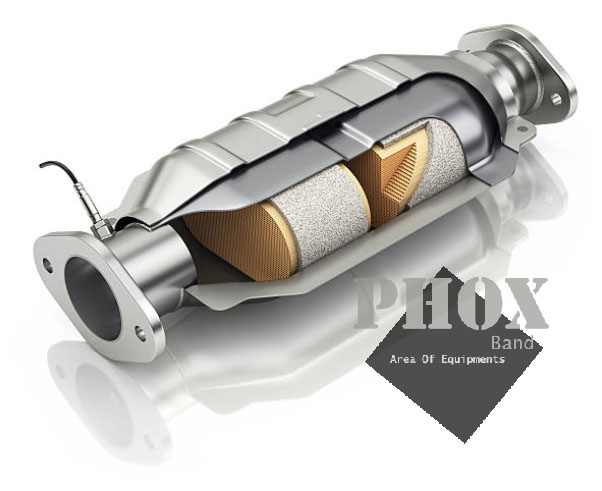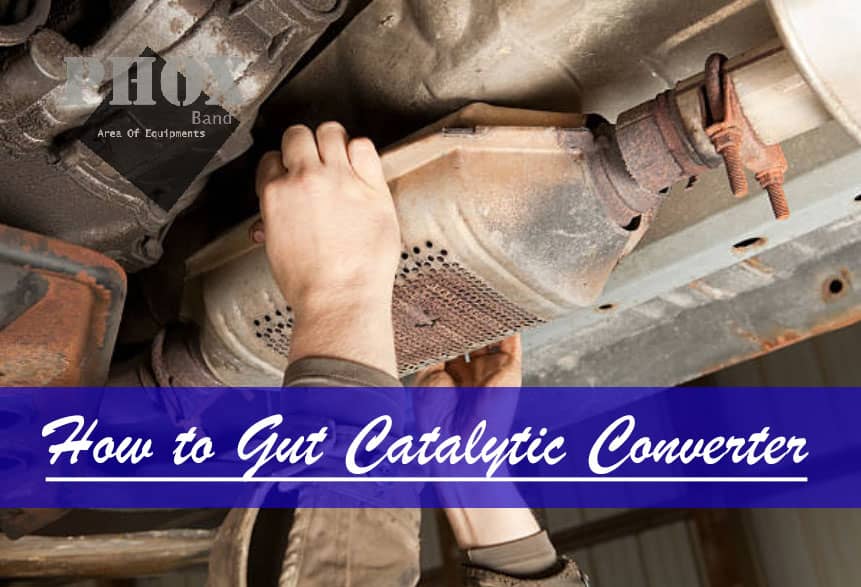A catalytic converter is your vehicle’s exhaust ejection control device, which can reduce toxic gases. It is commonly used as an internal combustion engine, which helps your vehicle to convert hydrocarbon to water, nitrogen oxide to oxygen, carbon monoxide to carbon dioxide.
However, continuous use for a long time can cause the catalytic converter to get plugged, which reduces the fuel efficiency of your car and does not work smoothly. So to prevent some of these problems, you need to know about how to gut catalytic converter.
How to Gut Catalytic Converter
To gut catalytic converter on your vehicle, you need to separate the converter from your vehicle muffler. Then start the engine; if the engine out less ratty sound, that means the converter is clogged, ultimately; if you decide to gut catalytic converter, then follow the steps given to the below.
We share a detailed guide step by step guide, which can help you a lot to get the converter without removing it easily. Let’s see.
So, What Will You Need Necessary Equipment For Gut Catalytic Converter?
Well, there are a number of equipment that is must be needed for this process here is,
- A chisel
- Putty knife
- Welding torch
- High frame jack if pneumatic
- Cold weld epoxy
After taking the above equipment, make sure that you have separated the muffler of the vehicle. Then follow the process below step by step.
Step #1: Lift the Car and Prepare It
Before starting our initial process, the first thing you need to do is to lift the car up a certain amount from the ground with the help of a pneumatic lift so that you can easily settle under the vehicle. It will make it much easier to work on the converter without removing it.
Then you need to find out which side the catalytic converter is on. Most car models have a catalytic converter around the engine block and many times in front of the muffler. So look at all these aspects first.
But one thing to keep in mind before this, if you have started the car engine a while ago, then immediately refrain from touching the catalytic converter, as there is a risk of burning your hand. Wait until it reaches normal temperature.
Step #2: Make a Flap with Cuts in Converter Base
Secondly, we will recommend you to make three cuts at the right angle using the wheel grinder with a catalytic converter base. In this case, you should be careful; if you do not want to change the device immediately, then don’t cut out a square hole.
Step #3: Break Up the Ceramic Lining Part
In this case, first, you wear a welding mask on your face and wear gloves for support. Usually, the ceramic structure inside the catalytic converter is a lot like a honeycomb, so you don’t have to work so hard to break and remove it.
If you want, you can easily break it by using a hammer. However, we would recommend you to use a chisel and hammer to remove it perfectly. So you take the chisel and hammer and safely hit the converter, and after the ceramic slice is separated, remove it separately from the converter. And make sure you remove them all from the converter.
Step #4: Join the Flap
After that, while wearing a welding mask and gloves, join the flap in its original position with the help of welding machines. Here you put the welding torch to medium setting for melting the steel wires. Then when it is hot, you can use the steel putty knife for welding metal smooth.
Step #5: Check if There is Any Form of Leakage.
The last thing you need to do now is to make sure that there is no leakage left after doing all these processes. In this case, when you start the car’s engine, if you hear any unusual noise or loud noise, then you have to understand that there is still leakage in any side of the catalytic converter.
In this case, if you want to fix this type of leakage, you need to use cold weld epoxy, which will help you to repair the leakage easily. First, start the engine again, and find out the leakage part from the converter, and apply epoxy and seal that part.

FAQ: Frequently Asked Question.
Is it possible for a catalytic converter that is blocked to unblock itself?
The short answer is “Yes.” However, this happens in very rare incidents, so you need some help to unblock it.
When you realize that the converter is completely blocked, you need to clean it manually. Replace ceramic materials when they decrease.
How will you know if there is leakage?
To find out the leakage issue, rather than start the car engine first, if you notice any unknown noise, vibrations, or strange things from the converter, you can confirm that your catalytic converter has an air leakage issue. If you want to solve the leakage issue, you can use cold weld epoxy to get perfect results.
Apply the epoxy on the converter leakage side, then after some time, start the engine again, and then if you do not notice any noise, ensure that leakage is sealed.
What causes overheating of the catalytic converter?
If your vehicle engine is overworking and has been running for a long time, the engine overheats the catalytic converter. There are also some other reasons why the converter is overheating.
If your vehicle’s fuel injectors leak, the fuel enters the catalytic converter directly. It produces hydrocarbon gas, which is the main cause. And too many hydrocarbons cause vehicle converters to overheat. It also causes clogging of your converter later.
Final Verdicts
To avoid the catalytic converter plugged issue, you always need to clean the vehicle’s internal part and converter. In this article, we are trying to provide an easy short guide for gutting a catalytic converter. Also, we try to provide some essential frequently questions answer. I hope this article will help you a lot. If you have any questions, please comment to us below.

